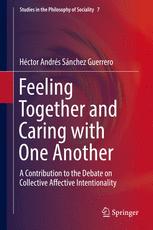

Most ebook files are in PDF format, so you can easily read them using various software such as Foxit Reader or directly on the Google Chrome browser.
Some ebook files are released by publishers in other formats such as .awz, .mobi, .epub, .fb2, etc. You may need to install specific software to read these formats on mobile/PC, such as Calibre.
Please read the tutorial at this link: https://ebookbell.com/faq
We offer FREE conversion to the popular formats you request; however, this may take some time. Therefore, right after payment, please email us, and we will try to provide the service as quickly as possible.
For some exceptional file formats or broken links (if any), please refrain from opening any disputes. Instead, email us first, and we will try to assist within a maximum of 6 hours.
EbookBell Team

4.1
20 reviewsThis book examines the human ability to participate in moments of joint feeling. It presents an answer to the question concerning the nature of our faculty to share in what might be called episodes of collective affective intentionality. The proposal develops the claim that our capacity to participate in such episodes is grounded in an ability central to our human condition: our capacity to care with one another about certain things.
The author provides a phenomenologically adequate account of collective affective intentionality that takes seriously the idea that feelings are at the core of our emotional relation to the world. He details a form of group emotional orientation that relies on the fact that the participating individuals have come to share a number of concerns. Readers will learn that at the heart of a collective affective intentional episode, one does not merely find a set of shared concerns, but also a particular mode of caring.
In the end, the argument presented in this monograph makes plausible the idea that the emotions through which humans participate in moments of affective intentional community express our nature. In addition, it shows that the debate on collective affective intentionality also permits us to better understand the relationship between two conflicting philosophical pictures of ourselves: the idea that we are essentially social beings and the claim that we are creatures for whom our personal existence is an issue.
Thus, aiming at an elucidation of the nature of our ability to feel together, the book offers a detailed account of what it is to situationally express our human nature by caring about something in a properly joint manner.